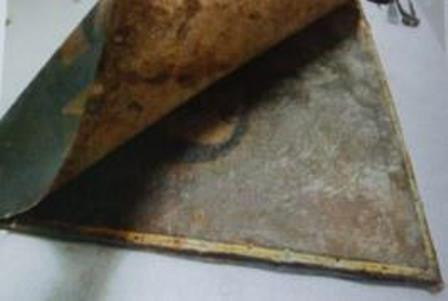 A painting thought to be of St Francis Xavier SJ – and believed to have been lost almost 250 years ago – has been rediscovered at the Royal Scots College, Salamanca in Spain.
A painting thought to be of St Francis Xavier SJ – and believed to have been lost almost 250 years ago – has been rediscovered at the Royal Scots College, Salamanca in Spain.
When the Scots Parliament outlawed Catholicism in Scotland in 1560, seminaries were founded at Tournay, Rome, Paris and Madrid to ensure a supply of priests for the Scottish Mission. The Tournay seminary later moved to Douay and the college in Madrid was entrusted to the Jesuits. In 1771, having failed to produce very many priests for the mission in Scotland, the college in Madrid relocated to the former Jesuit Colegio de San Ambrosio in Valladolid where it remained for more than 200 years. However, in 1988, it was decided to move to the university city of Salamanca, principally to give students the possibility of attending the Pontifical University, which had been founded by Pope Pius XII in 1940.
There was mention of the College having had images of St Francis Xavier in its original home in Madrid, which were taken to Valladolid in 1771, but it was assumed they had been lost in the move. Two years ago, a painting of Jesus carrying his cross was sent off for restoration and it was discovered that there was a second canvas behind it, very badly damaged. The restorer carefully removed the canvas of Christ with the cross to reveal an image of a bearded man, probably a saint and by the markings probably a Jesuit. It was in a poor state and nothing firm could be identified or established about the identity of the man until further research and restoration were done.
The painting was returned to the Royal Scots College, just ahead of the feast of St Francis Xavier on December 3, and an amazing transformation had taken place. The image is clearly of a saint carrying a staff and a lily, with the dove of the Holy Spirit above. The lily signifies that this person was a confessor, rather than a martyr; and the staff represents someone who journeys – a missionary. The Holy Spirit suggests he was someone “inspired” and therefore holy; and the absence of any book in the image indicates that he was not principally known by his writings. The saint is wearing the Jesuit emblem on his tunic, so the restoration team believed it might be a painting of St Francis Xavier or one of the early Jesuit (non-martyr) missionaries.
What confirmed it absolutely as St Francis Xavier is the text which was uncovered beneath the heavy dark varnish and dirt: emerging from his mouth are the words “Satis est Domine Satis est” (“It is enough, Lord, it is enough”). These were reputed to be words St Francis uttered on a number of occasions in moments of ecstatic prayer; the dove suggests this experience too. In fact, these words are inscribed on the saint’s tomb in Goa, India, and appear in a famous 17th century painting of him in Kobe, Japan.
This, therefore, is now believed to be one of the paintings of St Francis Xavier that were taken from Madrid to Valladolid in 1771, an image which has been part of the Royal Scots College for 300 years or so. It has now been restored to its rightful place, as a source of inspiration, that others may follow Xavier’s example of missionary zeal and enthusiasm for the Gospel. [Jesuits in Britain]

